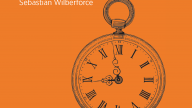Legacy fundraising inspiration from the USA
I recently came back from the Association of Fundraising Professionals’ (AFP) conference in San Antonio, Texas. Based on some of the sessions at the conference, I thought I would share some US takes on legacy fundraising. Or as it’s often called there – planned giving.
Focus on inspiration
Unlike here in the UK where we only really have gifts in wills, US fundraisers can offer donors a whole range of ways to give towards the end of their lives. This could include bequests, annuities and charitable remainder trusts. This can be both a blessing and a curse. Donors have more options, but it can mean that planned giving messages drawn up by fundraisers can lean towards the technicalities – the how to do it rather than the why. There was a strong theme coming through at the conference around focusing on inspiration and not these technicalities. This is a lesson we can also learn in the UK. Sometimes we focus on will-writing at the expense of why someone should leave a gift.
Donor experience matters
Consultant and researcher Penelope Burke shared her recent research study, looking at legacy donors. One particularly important point she raised was that 56% of US donors say they haven’t told the charity about their plans. They thought it was a private matter. They didn’t want to be ‘stewarded’ and they wanted the flexibility to change their minds. If, as legacy fundraisers, we don’t know who more than half our legacy donors are, then the overall experience offered to all supporters becomes even more important. This suggests that legacy fundraisers should ensure that they’re acting as donor advocates to the wider organisation, continuously encouraging excellent standards of donor care.
Advance the donor hero story
Professor Russell James encouraged legacy fundraisers to advance the donor hero story. There’s a lot of thinking and research behind those five words, more of which Professor James will be sharing soon. However, in his AFP session, he pointed particularly to how charities can use Joseph Campbell’s Monomyth to construct donor stories which portray the donor as the hero, who has to grapple with a challenge, then gains a reward and returns with a gift to improve their world. He illustrates how this core story would resonate with a graduate leaving a legacy to their alma mater or a cancer survivor giving back to cancer research. He also pointed out that positioning the donor as a hero can help them to achieve a sense of symbolic immortality. This is a key element of good legacy fundraising.
Legacy donors don’t like pictures of hands!
A pet hate of mine is the picture of a disembodied hand, holding a pen, or perhaps even a quill, signing a will. Gifts in wills achieve so many wonderful things. Surely we can find a more creative way to illustrate those gifts. It was nice therefore to have that pet hate vindicated by Penelope Burkes’ research. She found that donors really don’t like pictures of hands. Hand images only score 3 points on a 7 point scale.
Overall, legacy fundraisers in the US seem to be dealing with many of the same issues as legacy fundraisers in the UK. It’s great to see that on both sides of the Atlantic the conversation is focusing on inspiring people to leave a gift. This makes it seem normal to both donors and organisations, and provides these fantastic donors with an excellent standard of care.

